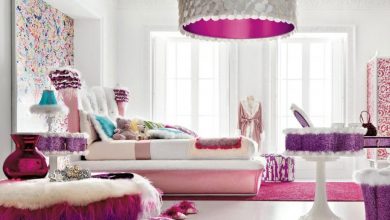
In recent years, biophilic design has gained attention as an innovative approach to interior design that focuses on the connection with nature. This design trend emphasizes the incorporation of natural elements and the creation of nurturing, engaging spaces within the home.
Biophilic design revolves around the concept of biophilia, which is the innate human tendency to seek a connection with the natural world. It aims to bring the outside environment indoors, creating a soothing and uplifting atmosphere.
The Origin and Evolution of Biophilic Design
The concept of biophilic design has evolved from the understanding of human’s intrinsic relationship with nature and the recognition of its positive impact on well-being. It has its roots in sustainable architecture and has now expanded to encompass interior design principles.
Biophilic design seeks to create spaces that incorporate natural elements, such as sunlight, vegetation, and natural materials, in order to evoke a connection to nature and promote a sense of well-being. This design approach is based on the idea that humans have an innate affinity for nature, and that incorporating natural elements into our built environment can have a positive impact on our physical and mental health.
Biophilic design can be applied to a wide range of spaces, including offices, homes, schools, and healthcare facilities. The goal is to create environments that are not only aesthetically pleasing, but also support the health and well-being of the people who inhabit them.
Benefits of Biophilic Design
Biophilic design has numerous benefits, including improved mood and emotional regulation, increased overall well-being, reduction of indoor pollutants, and a boost in motivation and productivity.

1. Improved Mood and Emotional Regulation:
Incorporating biophilic interior design into spaces has been shown to have a positive impact on mood and emotional regulation. By incorporating elements of nature, such as natural light, plants, and natural materials, biophilic design can create a calming and soothing environment that has been linked to reduced stress and anxiety.
2. Increase in Overall Well-being:
Studies have found that exposure to nature, even in a built environment, can lower blood pressure, improve cognitive function, and enhance mood. Biophilic design also encourages physical activity by creating spaces that encourage movement and exploration.
Additionally, the presence of natural elements has been linked to increased creativity and a greater sense of connection to the environment. By incorporating biophilic design principles into interior spaces, individuals can experience improved mental and physical well-being, leading to a more balanced and fulfilling lifestyle. As a result, incorporating biophilic design principles into interior spaces can have a positive impact on the overall well-being of the people who inhabit those spaces.

3. Reduction of Indoor Pollutants:
Incorporating biophilic design in indoor spaces has been shown to greatly reduce indoor pollutants. By utilizing natural elements such as plants, water features, and natural lighting, indoor environments can be transformed into healthy, pollutant-free spaces. Plants are especially effective in removing airborne toxins and impurities, acting as natural air purifiers.
Additionally, the presence of natural light and views of outdoor greenery can help create a calming and stress-reducing environment, which in turn can improve the overall well-being of occupants. By reducing indoor pollutants through biophilic design, buildings and homes can promote better air quality and ultimately contribute to the health of individuals who spend time in these spaces.
This approach not only benefits the health of occupants but also supports sustainability and environmental conservation by reducing the need for synthetic air purifying systems. Incorporating biophilic design can be a simple yet effective way to promote healthier indoor environments.
4. Boost in Motivation and Productivity:
By bringing nature into the office environment through the use of natural light, plants, and natural materials, employees report feeling more energized and focused on their tasks.
Additionally, biophilic design can also enhance creativity and problem-solving skills, as the connection to nature has been shown to stimulate the brain in positive ways. Employees in biophilic work environments have reported feeling more satisfied with their jobs, leading to increased productivity and higher quality work. Overall, incorporating biophilic design elements into the workplace can have a profound impact on employee motivation and productivity, ultimately benefiting both the individual and the organization as a whole.
Key Principles of Biophilic Design

A. The Natural Environment
One of the fundamental principles of biophilic design is to incorporate the natural environment into the interior space. This involves maximizing natural light, incorporating plants and living walls, using natural materials, and adding water features to mimic natural settings.
B. Natural Shapes and Patterns
Biophilic design emphasizes the use of organic shapes and patterns that mimic nature. These can be integrated into furniture, decor, and architectural elements, creating a sense of tranquility and connection with the natural world.

C. The Human-Nature Relationship
This principle focuses on strengthening the connection between individuals and nature within the interior environment. It involves creating spaces that encourage a sense of calm and comfort, promoting relaxation and well-being.
Strategies for Incorporating Biophilic Design
There are various strategies to effectively incorporate biophilic design into your home. Maximizing natural elements, embracing the natural environment, and using nature-inspired design and decor techniques are key to achieving a biophilic interior.

A. Maximizing Natural Elements
Embracing natural light, incorporating plants and living walls, and using natural materials such as wood and stone are effective ways to bring the outdoors inside. Additionally, integrating water features and nature-inspired art can further enhance the biophilic ambiance.
B. Design and Decor Techniques
Nature-inspired color schemes, organic shapes, textural richness, and earth tones all contribute to creating a biophilic interior. Mismatched furniture, varied heights and scales, cozy nooks, and the use of mirrors to reflect natural elements are also effective techniques in biophilic design.
C. Specific Room Ideas
Implementing biophilic design in specific rooms such as green color schemes for living areas, integrating kitchen and outdoor dining spaces, creating sunrooms with indoor vertical gardens, and incorporating biophilic elements in bedrooms can enhance the overall biophilic experience at home.

Practical Biophilic Design Tips for Home Implementation
For those looking to incorporate biophilic design on a budget, there are several cost-effective ideas such as DIY projects, using biophilic design in urban settings, and integrating biophilia in small spaces. These practical tips make biophilic design accessible to a wider audience.
A. Budget-Friendly Biophilic Ideas
Even with limited resources, individuals can still incorporate biophilic elements into their homes through small-scale DIY projects and budget-friendly design solutions, such as using repurposed materials and embracing natural light.
B. Using Biophilic Design in Urban Settings
Biophilic design is not limited to rural or suburban environments. It can be effectively integrated into urban settings through the use of indoor plants, natural materials, and creating connections with nature within metropolitan spaces.
C. Incorporating Biophilia in Small Spaces
For those living in compact homes or apartments, implementing biophilic design is still achievable. Utilizing vertical gardens, incorporating potted plants, and maximizing natural light can create a biophilic atmosphere in smaller living spaces.
D. DIY Biophilic Design Projects
Engaging in DIY biophilic design projects allows individuals to personalize their spaces by creating planters, living walls, and nature-inspired decor. These projects not only enhance the connection with nature but also add a unique touch to the interior design.

Advanced Biophilic Design Concepts
For those looking to delve deeper into biophilic design, exploring advanced concepts such as consulting with biophilic design experts, incorporating indoor landscaping techniques, promoting sustainability, and accessing online courses and resources can further enrich their understanding and implementation of biophilic design.
A. Role of a Biophilic Design Consultant
Working with a biophilic design consultant can provide valuable insights and expertise in creating a biophilic interior that aligns with personal preferences and lifestyle choices. These professionals can offer tailored solutions to incorporate biophilic elements effectively.
B. Indoor Landscaping Techniques
Indoor landscaping techniques involve the strategic placement of greenery, the use of natural materials, and the integration of water features to create an immersive natural environment within the home. These techniques contribute to the overall biophilic aesthetic.
C. Sustainability and Biophilic Design
Embracing sustainability in biophilic design involves using environmentally friendly materials, promoting energy efficiency, and integrating sustainable practices to minimize the ecological impact of the design. Sustainability is an essential aspect of biophilic design principles.

D. Biophilic Design Online Courses and Resources
Accessing online courses and resources on biophilic design provides a wealth of knowledge and inspiration for individuals interested in exploring and implementing biophilic interior design concepts. These resources offer guidance and support in incorporating biophilic elements into the home.
Conclusion
Biophilic design holds significant importance in creating environments that promote well-being, positivity, and connection with nature. It enhances the overall living experience by incorporating natural elements and nurturing spaces within the home.
As the awareness of biophilic design grows, the future is likely to see an increased emphasis on sustainability, innovative biophilic design applications, and a broader integration of biophilic principles into residential and commercial spaces.
Embracing biophilic design can transform interior spaces, promoting a sense of harmony and well-being. Individuals are encouraged to explore the possibilities of biophilic design further and to consider its positive impact on their living environments.









